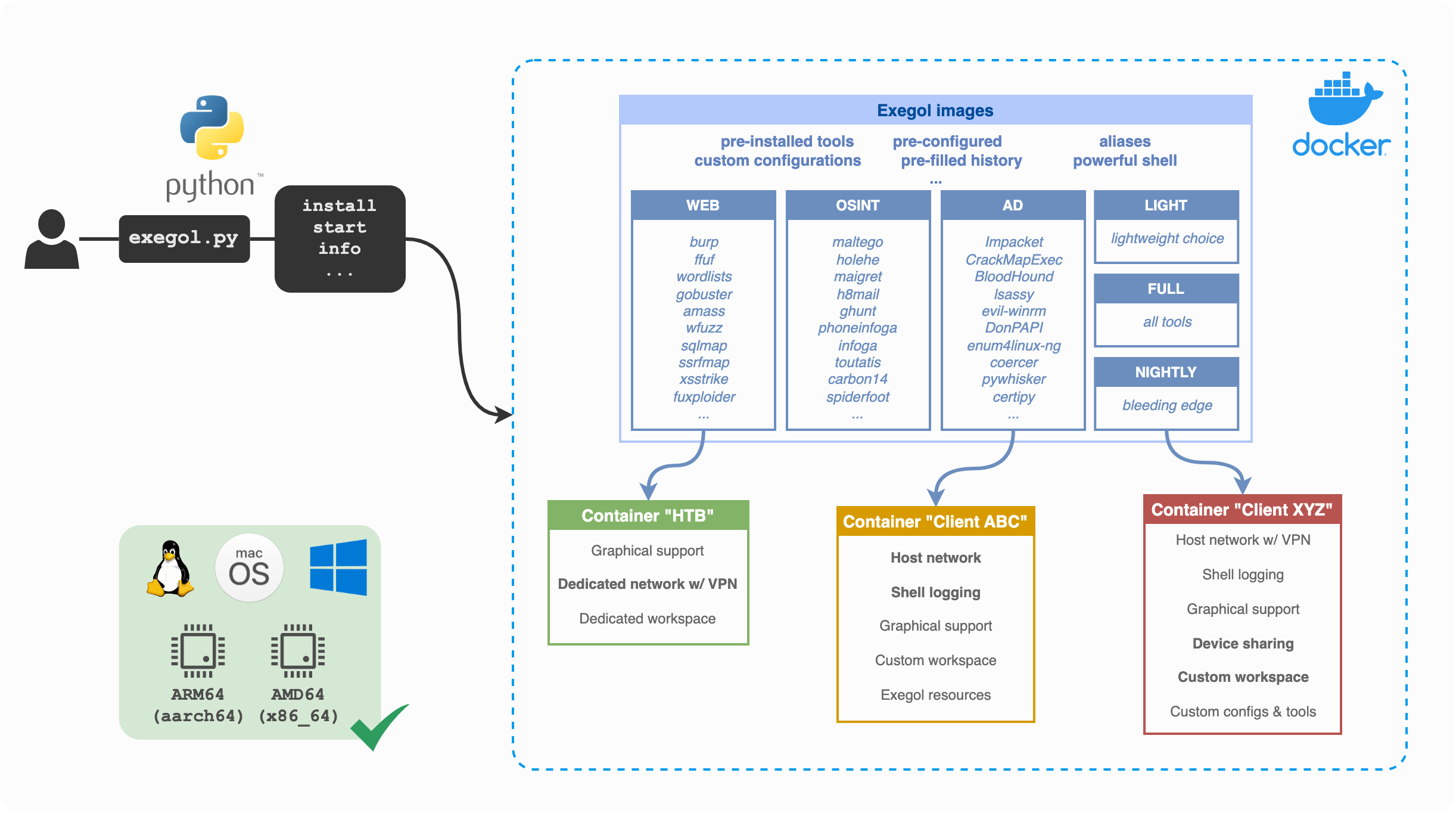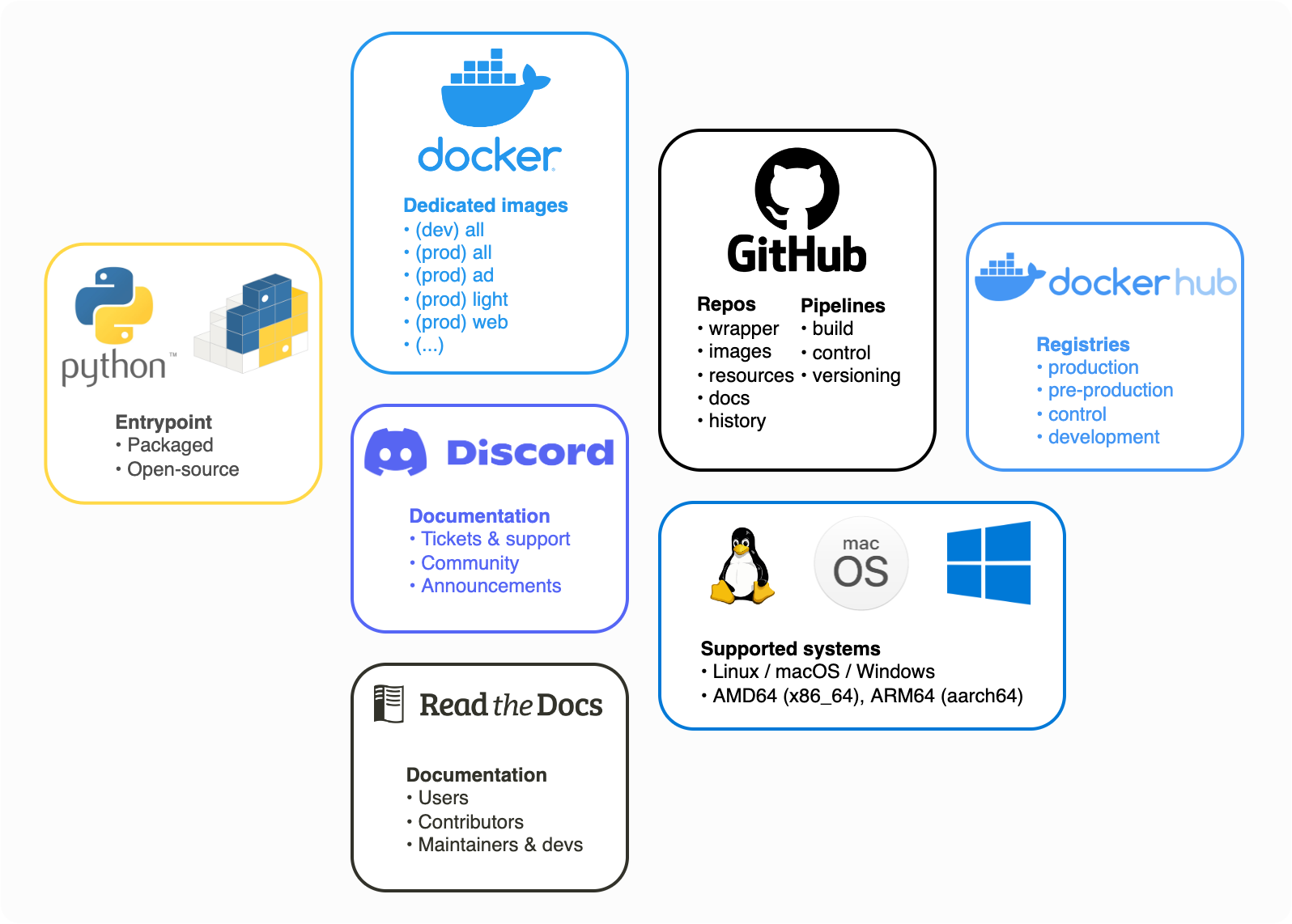Why You Should STOP Using Kali Linux

Exegol: The Best Modern Alternative to Kali Linux
The History of Kali Linux: A Rise to Power
Kali Linux is a must-have distribution, widely recognized by professionals in the security field, especially for pentesters and offensive security auditors.
However, with the emergence of new technologies and lighter alternatives, should you still use Kali Linux? In this article, we revisit the evolution of this OS, explore its alternatives, and see how solutions like Exegol, based on Docker, are redefining hacking environments.
The Origins of Kali
Kali Linux, as we know it today, is the result of several projects that have evolved over time.
Two pioneering distributions played an essential role in its creation:
- WHAX: Created by Mati Aharoni, WHAX was a distribution dedicated to penetration testing.
- Auditor Security Collection: Developed by Max Moser, this distribution was also focused on security.
Both projects were based on Knoppix, a Linux distribution particularly known for its live mode stability, meaning it could run without installation on the hard drive.
The Birth of BackTrack

On May 26, 2006, BackTrack, a new operating system, was born with version 1.0. Designed to be a comprehensive OS for penetration testing, it included key tools such as Metasploit and Nmap.
BackTrack 2.0 arrived in March 2007 with major improvements, including the integration of versions 2 and 3 of the Metasploit Framework (msf) and a restructured menu for better tool accessibility.
In June 2008, BackTrack reached version 3.0, introducing additional features like Maltego, a data analysis and intelligence tool.
BackTrack 4 R2 in November 2010 further improved hardware compatibility.
A New Look

In August 2012, with the release of BackTrack 5 R3, a major restructuring occurred, using an Ubuntu base. However, the real turning point came on March 13, 2013: BackTrack became Kali Linux.
Under the guidance of Offensive Security, Kali was rebuilt from Debian and adopted the Debian package system, making its management and development more fluid.
Kali Linux Today

Since then, Kali has continued to evolve:
- In 2019, the interface switched from GNOME to XFCE, lightening the OS.
- In 2020, the default shell became zsh, providing better ergonomics for users.
Many other features have followed in the subsequent years.
Kali Linux is now available in various forms: ISO, virtual machine (VM), live USB, and even on mobile with Kali NetHunter. A special version is also available for Windows via the Windows Subsystem for Linux (WSL).
The latest addition is Kali Purple, offering a set of tools for cybersecurity defense, complementing offensive tools.
Alternatives to Kali Linux: Other Hacking OS Options
Although Kali remains popular, there are several equally powerful alternatives:
- BackBox: A distribution based on Ubuntu, with a particular focus on simplicity and lightness.
- BlackArch: Based on ArchLinux, BlackArch offers a vast collection of pentesting tools.
- Parrot OS: Built on Debian, Parrot OS stands out for its elegant interface and emphasis on security and privacy.
Exegol: The New Revolution in Ethical Hacking (Pentest)

The Problem
Pentesting environments like Kali Linux or its alternatives often require complex installations, manual configurations, and can be heavy for certain machines. This is where Exegol, an innovative Docker-based solution, comes into play.
Docker: A Revolutionary Containerization System

Docker is a containerization system that allows applications to run in isolated environments. It offers several advantages:
- Security: Each container operates independently of the others, thanks to strict isolation.
- Portability: Containers are lightweight and can be easily deployed on any system.
- Automation: Container management is simple and can be fully automated.
Introducing Exegol
Exegol is a Docker-based pentesting environment offering unmatched flexibility and ease of use. It works for any user and creates a container for each client.

Exegol Project Architecture
The benefits of Exegol are numerous:
- All tools are easily accessible, with preconfigured aliases and command histories.
- File sharing between the host and container is possible.
- Shell session logging is automated, providing a complete operation history.
- Task automation is easy at container startup.
- VNC graphical access is available through the browser.
- The detailed descriptions of the installed tools in the documentation.
- The pre-recorded commands (what a time saver!). By the way, do you know Arsenal to never lose a command? 🔥
- The functional use of graphical applications like Firefox, Burp, or BloodHound!
- VNC access simulating a remote desktop.
- Automatic VPN mounting at container startup.
How Exegol Works
Exegol is based on three main repositories:
- Exegol: A Python wrapper to simplify usage.
- Resources: A repository containing all necessary resources.
- Dockerfiles: Docker files for creating tool containers.
There’s also a Discord server and a website for documentation.
Here’s a quick diagram below 👇

Exegol Project Technologies
Exegol offers several specialized images like:
- Web: For web security testing.
- OSINT: For open-source intelligence.
- AD: For Active Directory environments.
- Light and Full: Lighter or complete versions depending on needs.
Exegol is an open project for developers and is regularly featured in major conferences. There’s also a Discord server available for community exchanges.
Demonstration and Use
Installing Exegol is very simple:
- Install Docker with the appropriate command.
- Install the Exegol wrapper via pip or from the sources. More info on the installation page.
- That’s it:
exegol start master😃
And by the way, check it out on Trackflaw’s YouTube channel 👇
Conclusion: To the Dark Side, You Must Go!
While Kali Linux remains a reference, the future seems to be turning towards lighter and more portable solutions like Exegol.
Using Kali in a VM is increasingly obsolete compared to the advantages offered by Docker: increased performance, portability, and flexibility.
Exegol thus establishes itself as an everyday tool for pentesting professionals, offering an optimized and modern experience.
Project link: https://github.com/ThePorgs/Exegol
 TRACKFLAW
TRACKFLAW